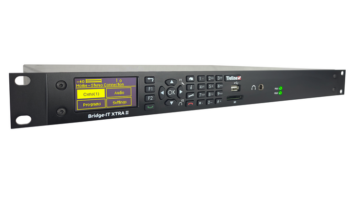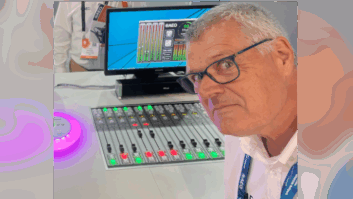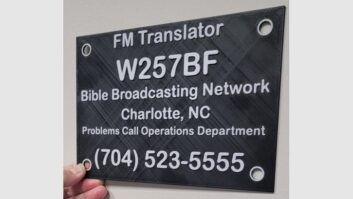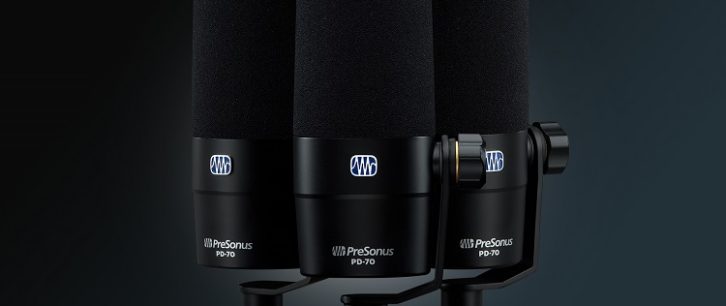
Any given enthusiast on any given subject has his or her favorite “make” and “model.” Fishermen can rattle off their preferred rod and reel combinations in an instant. The same is true with home theatre junkies. And bicyclists. And gardeners.
If, however, you want to engage in a fiery, passionate debate for the ages, get an engineer riled up about microphones!
Radio engineers have a well-established pallet of large-diaphragm studio microphones from which to choose. Over the years a few players have darted on and off the scene in their efforts to provide some sort of nuance or cost-effective solution.
One of the more recent contributions comes from PreSonus. Known mostly for their audio interfaces and mixing consoles, the Louisiana-based manufacturer does have a microphone selection. They offer drum kit mics, matched-pair condensers, an RTA mic, large-diaphragm side address, and very recently, a USB voiceover mic option.
Adding to that growing catalog, PreSonus entered the hardcore radio broadcaster arena with the new PD-70, which retails for $129.95.
What is it? Read on!
Bulletproof Ruggedness
A radio studio is the most unforgiving environment for a microphone. Energetic on-air talent are physical and loud, and the first recipient of that energy is the mic. It’s why studio microphones are heavy and robust. The PreSonus PD-70 holds its own in that regard.
It weighs 1.4 pounds and is nothing but steel. A built-in pop filter and outer foam windscreen foster a sleek design and more importantly, excellent plosive rejection. It has a hard-mount design, but handling noise is minimal due to the sheer weight and solid inner construction.
The most interesting rugged feature is the XLR jack construction. It is built firmly into the back end of the PD-70 and it’s not going anywhere. If ever a microphone could be called a “brick,” the PD-70 is it.
Tech Specs
The PD-70, from a performance perspective, wasn’t designed to reproduce or accentuate warmth and tone. Its sole purpose is to accentuate clarity.
The frequency response is a full 20 Hz to 20 kHz, but the HP rolloff happens at nearly 100 Hz and falls off fairly rapidly. The upper frequencies are accented beginning at 1 kHz, leveling off at +5 dB around 4 kHz and then rolling off at 11 kHz. This translates into a microphone that keeps voices out of the mud. It’s that simple.
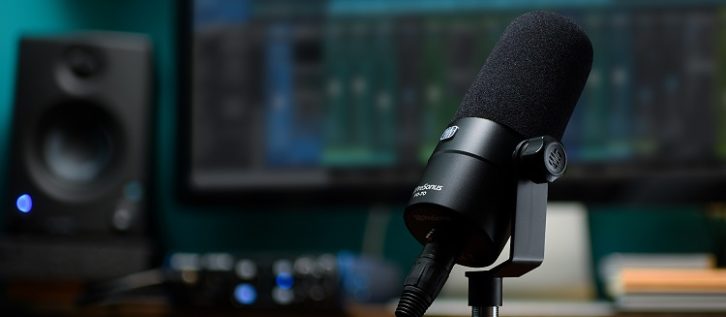
When conducting A/B comparisons to other legacy “radio mics,” the PD-70 coloration lends itself to aiding in situations where vocal clarity and microphone technique are poor. The proximity effect is greatly reduced by the early 100 Hz high-pass rolloff. Additionally, the PD-70 exhibits some sort of magic as it pertains to the higher frequency response, in that “S” sounds are very detailed and clean.
The dynamic nature of the PD-70 and its aggressive off-axis rejection makes it very forgiving in less-than-perfect acoustic environments. Unlike some dynamic microphones, the PD-70 noise floor is virtually nonexistent. It has a very clean output and performs smoothly, using any preamp.
At Home
So where should the PD-70 go?
As the price of $129.95 suggests, PreSonus introduced it as an entry-level, budget-friendly studio mic solution. In testing and comparisons, however, it is competitive against long-standing industry stalwarts.
The PD-70 would stand out where novice voice talent is present. It is forgiving to poor mic technique, accommodating to untrained vocal talent (who generally don’t know how to project properly), friendly to bad acoustical environments and it can absorb physical abuse.
For voice talent who have deeper, warm voices and need a microphone that will reproduce that warmth, the PD-70 may not be what he or she is looking for. For everyone else, who needs clarity and accurate voice reproduction, the PD-70 is a top-notch, affordable choice.
Large-diaphragm dynamic microphones frequently are used on kick drums and guitar cabinets. The PD-70 may not necessarily be a kick drum mic. It would, however, perform well as a guitar microphone. Its frequency response rejects the “boomy” tones produced by guitar soundholes and accurately reproduces string sounds with clarity. When a soloist arrives in a studio to do a guitar performance, the PD-70 is an excellent choice.
As for me, my voice can be muddy for two reasons. It’s fairly deep, but also very asymmetrical. The asymmetry demonstrated itself using the PD-70, but it wasn’t as pronounced. Plus, the PD-70’s focus on clarity overcame the asymmetry effects very nicely.
Finally, for this review I asked a production director to spend some time with the PD-70. He conducted an A/B comparison against a very expensive industry standard. After the comparison, he immediately ordered a PD-70.
For information, contact PreSonus in Louisiana at +1-225-216-7887 or visit www.presonus.com.

